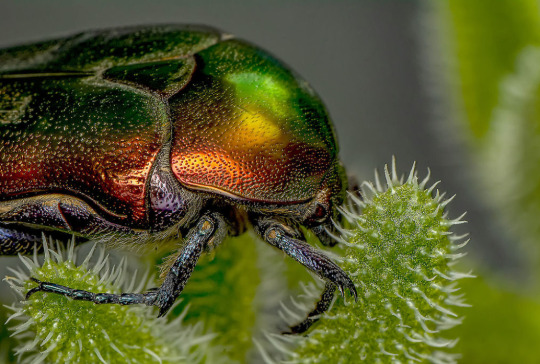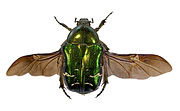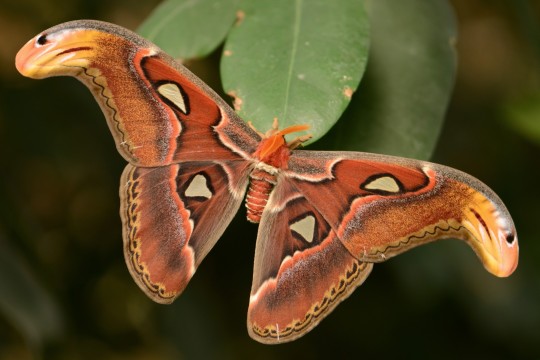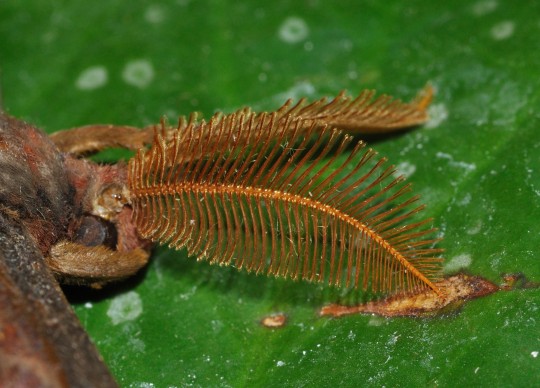your favorite bug provider || avid beetle enthusiast || he/him || inactive on weekends
Don't wanna be here? Send us removal request.
Text
White Witch Moth

Thysania agrippina
The White Witch Moth is a central American moth in the Erebidae family.

White Witch Moth Fun Facts:
The White Witch moth is the worlds largest insect when measured by wingspan! In terms of surface area, it is beaten only by the Hercules Moth and the Atlas Moth (information and facts posted earlier about the Atlas Moth)
The name comes from when naturalists would kill bats and birds with shotguns for later inspection. When this moth was spotted, naturalists believed it was a bird due to the size and attempted to shoot at it, but failed because of the gliding patterns of the White Witch moth. It got a reputation as the "Unkillable White Witch"
Some other names for the White Witch Moth are the Ghost Moth, Great Grey Witch, and the Great Owlet Moth, although White Witch Moth is the most widely accepted term.
The average wingspan is 30 centimeters (12 inches)


18 notes
·
View notes
Text
Green Rose Chafer

Cetonia aurata
Green Rose Chafers are a European and Southeast Asian beetle in the Scarabaeidae family, not to be confused with North American Rose Chafers. (will post more information about North American Rose Chafers if requested)

Green Rose Chafer Fun Facts:
Green Rose Chafers are very important decomposers and feed on compost, leaf mold, manure, or rotting wood.
They are a kind of Scarab beetle
Rose Chafers have a very reflective and usually green exoskeleton. Sometimes discolorations make these beetles look copper, silver, or gold. (see image above)
On foot, Green Rose Chafers can crawl 1.5 meters per second (around 5 feet) and they are very fast fliers, travelling around 3 meters per second. (A little less than 10 feet per second)
Along with being decomposers, Green Rose Chafers also sometimes feed on flowers (specifically roses, lending it its name) and are important pollinators.



5 notes
·
View notes
Text
Phyganistria tamdaoensis

P. tamdaoensis is a species in the large stick bug family (phasmatidae).

P. Tamdaoensis Fun Facts:
They are the second largest insect on the planet, being about 23 centimeters (around 9 inches) long in standard standing position and 54 centimeters (around 21 inches) long with outstretched appendages.
P. Tamdaoensis are a relatively new discovery, with the first being discovered in 2010 and the first recorded official publication in an entomology journal being in 2014.
The eggs are an extremely interesting shape, formed like a round bullet with a button on the end. Four images of P. Tamdaoensis are attached at the bottom of the post.
Nymph stick bugs in this species are bright green and females slowly fade into a camouflage wooden brown shade, while males have an almost metallic sheer shade with a golden head and thorax and a reflective teal abdomen. The appendages are golden with a sheer green underside.
The P. Tamdaoensis species has been named a “master of disguise” by the International Institute for Species Exploration because of the very convincing shape and shade of the female insects.

4 notes
·
View notes
Text
Atlas Moth

Atticus atlas
The Atlas Moth is a moth in the Saturniidae family named for its map-like wing patterns.

Atlas Moth fun facts:
Usually only native to rainforests along the equator, an Atlas moth has been spotted in the wild in England. Current predictions assume it has escaped from an English collector.
The wingspan of an Atlas Moth is usually up to 9 1/2 inches, the second largest wingspan of any moth. (The moth with the largest wingspan is the White Witch Moth, which will be posted soon!) The wings have a surface area of around 27 square inches, which is second only to the Hercules Moth.
Male Atlas Moths are slightly smaller but with larger and wider antannae. (see attached antannae image at the bottom)
Atlas Moths do not eat once they are out of the cacoon, and usually only live about a week or two after emergence from the cacoon or until the female lays her eggs.
In China and Hong Kong, the Cantonese name for Atlas Moths translates to "Snake Head Moth," named for the serpent like forewings that pretrude from the rest of the wing.
Some Atlas Moths are used for silk im India during their larva stage. Atlas Moth silk is less delicate and soft, making it a less common alternative to the domestic silkmoth. (Bombyx mori) Atlas Moth silk is said to be a sturdier than ordinary silk.




53 notes
·
View notes
Text
The Black Vine Weevil

Otiorhynchus sulcatus
The Black Vine Weevil, a species of beetle in the Circulionidae family, (AKA Otiorhynchus sulcatus) is a flightless nocturnal insect.
Black Vine Weevil Fun Facts:
Female black vine weevils can reproduce pathogenically - an asexual reproduction process where an embryo is formed in an egg without need for a sperm. Weevils can also produce sexually, and must in order to produce a female. All results of pathogenical reproduction are male insects.
While black vine weevils are grubs, they can dig into the roots of many agricultural crops. Many weevils are immune to harsh pesticides.
Black Vine Weevils are native to Europe, but made their way to North America via cargo ship and are largely unharmful to non-agricultural ecosystems.



3 notes
·
View notes